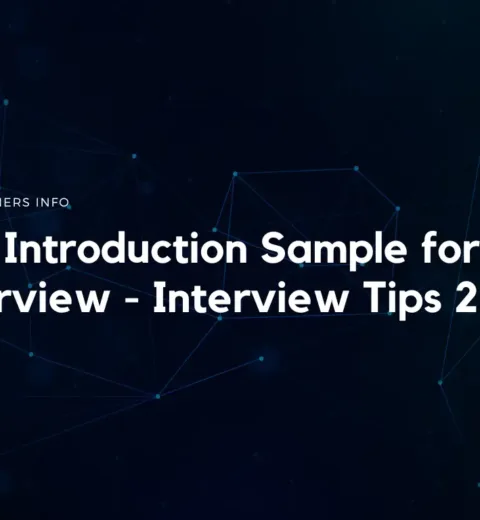Table of Contents
Resume Tips to Impress Interviewer:
Crafting an impressive resume is a vital step in securing a job interview and, ultimately, the job itself. A well-constructed resume not only highlights your qualifications but also demonstrates your professionalism and attention to detail. This comprehensive guide will delve into the top 10 tips for writing a standout resume, providing over 2000 words of in-depth advice and strategies.
1. Tailor Your Resume to the Job
Customization is Key
One of the most crucial aspects of writing an impressive resume is tailoring it to each specific job application. This involves highlighting the skills, experiences, and achievements that are most relevant to the job you are applying for. Customization not only shows that you have a genuine interest in the position but also helps your resume pass through applicant tracking systems (ATS) which scan for relevant keywords.
Steps to Customize Your Resume:
- Analyze the Job Description: Identify the key skills and qualifications required for the job. Look for repeated keywords and phrases.
- Match Your Skills: Align your resume’s content with the job description. Highlight experiences and achievements that directly relate to the job.
- Use Job-Specific Keywords: Incorporate the same keywords from the job posting into your resume. This increases the likelihood of your resume passing through ATS filters.
Example: If the job description emphasizes project management and team leadership, make sure your resume prominently features your project management experience and any leadership roles you’ve held.
2. Use a Clean and Professional Format
The Importance of Readability
A clean, professional resume format ensures that your resume is easy to read and navigate. Hiring managers often review numerous resumes, so making yours visually appealing and straightforward can help it stand out.
Formatting Tips:
- Simple Fonts: Use professional, easy-to-read fonts such as Arial, Calibri, or Times New Roman.
- Consistent Formatting: Ensure that headings, bullet points, and text formatting are consistent throughout the document.
- Clear Headings: Use headings to organize sections such as “Professional Experience,” “Education,” “Skills,” and “Certifications.”
- White Space: Use adequate white space to avoid clutter and make the resume more readable.
Example: A resume with clearly defined sections, bullet points for responsibilities and achievements, and a simple font will be easier for a hiring manager to quickly scan and identify key information.
3. Start with a Strong Summary
Making a Great First Impression
The summary or objective statement at the beginning of your resume provides a snapshot of your qualifications, experience, and career goals. A well-written summary can grab the employer’s attention and make them want to read more.
Crafting an Effective Summary:
- Be Concise: Limit your summary to 2-3 sentences.
- Highlight Key Qualifications: Mention your most relevant skills and experiences.
- Include Career Goals: Briefly state your career objectives and how they align with the job you are applying for.
Example: “Experienced project manager with over five years of experience in leading cross-functional teams to deliver complex projects on time and within budget. Proven track record in improving process efficiency and driving innovation. Seeking to leverage expertise in project management and team leadership to contribute to [Company Name]’s success.”
4. Focus on Achievements, Not Just Duties
Demonstrating Your Impact
Instead of merely listing job duties, focus on your achievements and the impact you made in previous roles. Highlighting specific accomplishments provides concrete evidence of your skills and the value you can bring to an organization.
How to Highlight Achievements:
- Use Quantifiable Metrics: Whenever possible, use numbers, percentages, or other metrics to quantify your achievements.
- Describe the Impact: Explain how your actions benefited the organization, such as increasing revenue, reducing costs, or improving efficiency.
- Be Specific: Provide detailed descriptions of your accomplishments rather than vague statements.
Example: “Implemented a new inventory management system that reduced stock discrepancies by 30% and improved order fulfillment times by 20%.”
5. Use Action Verbs
Creating a Dynamic Resume
Starting each bullet point with a strong action verb can make your resume more dynamic and engaging. Action verbs convey a sense of activity and accomplishment, helping to illustrate your contributions effectively.
Examples of Action Verbs:
- Leadership: Led, Directed, Managed, Supervised
- Technical Skills: Developed, Implemented, Engineered, Programmed
- Communication: Presented, Negotiated, Authored, Liaised
- Problem-Solving: Resolved, Addressed, Improved, Optimized
Example: “Developed and implemented a new customer service protocol, resulting in a 25% increase in customer satisfaction ratings.”
6. Include Relevant Keywords
Optimizing for Applicant Tracking Systems
Incorporating relevant keywords from the job posting throughout your resume helps it pass through ATS filters and demonstrates that you have the necessary skills and experience for the job.
Keyword Optimization Tips:
- Use Exact Phrases: Use the exact keywords and phrases from the job description.
- Integrate Naturally: Ensure keywords fit naturally within your resume and do not appear forced.
- Include in Multiple Sections: Place keywords in various sections, such as the summary, skills, and experience sections.
Example: If the job description requires “project management” and “agile methodologies,” make sure these terms appear in your resume in the relevant context.
7. Quantify Your Achievements
Providing Concrete Evidence
Quantifying your achievements with numbers, percentages, or other metrics provides concrete evidence of your skills and the impact you have made. This makes your accomplishments more tangible and impressive to potential employers.
How to Quantify Achievements:
- Use Specific Numbers: Mention exact figures wherever possible (e.g., managed a budget of $500,000).
- Highlight Improvements: Show how your actions led to measurable improvements (e.g., increased sales by 15%).
- Include Time Frames: Specify the time frame over which the achievements were made (e.g., reduced costs by 20% over six months).
Example: “Increased quarterly sales by 20% by developing and implementing a new sales strategy, resulting in an additional $200,000 in revenue.”
8. Highlight Relevant Skills and Certifications
Showcasing Your Qualifications
List your key skills and any relevant certifications prominently. This includes technical skills, soft skills, and industry-specific qualifications that are crucial for the job you’re applying for.
Organizing Skills and Certifications:
- Skills Section: Create a separate section for skills and list them in bullet points.
- Certifications Section: Include a section for certifications and provide details such as the certifying organization and date of certification.
- Relevance: Prioritize skills and certifications that are most relevant to the job.
Example: “Skills: Project Management, Agile Methodologies, Data Analysis, SQL, Python” “Certifications: PMP (Project Management Professional), Certified Scrum Master, Google Data Analytics Certificate”
9. Keep It Concise
Avoiding Information Overload
A resume should typically be one to two pages long. Be concise and focus on the most important and relevant information. Remove any outdated or irrelevant details that do not contribute to your job application.
Tips for Keeping Your Resume Concise:
- Prioritize Content: Focus on your most recent and relevant experiences.
- Use Bullet Points: Bullet points help to keep information concise and easy to read.
- Avoid Redundancy: Eliminate repetitive information and unnecessary details.
Example: Instead of listing every job you’ve ever had, focus on the most recent roles that are relevant to the position you’re applying for.
10. Proofread and Edit Thoroughly
Ensuring Professionalism
Carefully proofreading your resume to eliminate any spelling or grammatical errors is crucial. An error-free resume reflects your attention to detail and professionalism.
Proofreading Tips:
- Take a Break: After writing your resume, take a break before proofreading to come back with fresh eyes.
- Read Aloud: Reading your resume aloud can help you catch errors you might miss when reading silently.
- Use Tools: Utilize tools like Grammarly to check for spelling and grammatical errors.
- Ask for Help: Consider asking a friend or using a professional service to review your resume for mistakes and clarity.
Example: A resume with typos or grammatical errors can leave a negative impression, so ensure every detail is perfect before submitting it.
Conclusion
By following these detailed tips, you can create a resume that effectively showcases your qualifications, grabs the attention of hiring managers, and increases your chances of landing an interview. Here’s a summary of the key points covered:
- Tailor Your Resume to the Job: Customize your resume for each job application to highlight relevant skills and experiences.
- Use a Clean and Professional Format: Ensure your resume is easy to read with a simple, professional layout.
- Start with a Strong Summary: Begin with a compelling summary or objective statement.
- Focus on Achievements, Not Just Duties: Highlight your accomplishments and the impact you made in previous roles.
- Use Action Verbs: Start each bullet point with a strong action verb to convey your contributions effectively.
- Include Relevant Keywords: Incorporate keywords from the job description to pass through ATS filters.
- Quantify Your Achievements: Use numbers, percentages, and metrics to provide concrete evidence of your skills.
- Highlight Relevant Skills and Certifications: List key skills and certifications prominently.
- Keep It Concise: Focus on the most important and relevant information, keeping your resume one to two pages long.
- Proofread and Edit Thoroughly: Ensure your resume is error-free to reflect your attention to detail and professionalism.
By continuously updating and tailoring your resume as you gain### Top 10 Tips for Writing an Impressive Resume
Creating an impressive resume is essential for catching the eye of hiring managers and securing job interviews. This guide will delve into the top 10 tips for writing a standout resume, ensuring you make a lasting impression.










